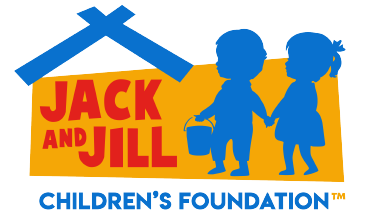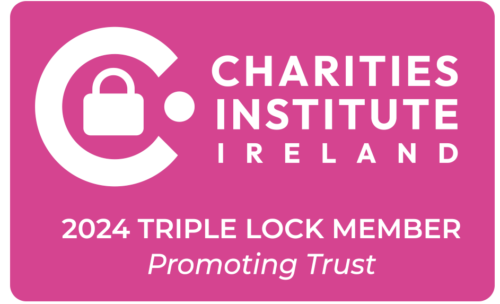Following the powerful, inspired article (St James’s a bad location for a children’s hospital) in the Irish Independent last week, signed by Dr Eamonn Faller who works in St James’s Hospital, we have received a torrent of messages expressing their opposition to the St James’s site and we’d like to thank everyone and salute the courage for adding your voices to this Fight to Stop James.
Here is another letter which has been sent to all the Heads of Department in the Faculty of Health Sciences with direct involvement with St James back in March by Joseph McPartlin (PhD, FRCPath Director, Trinity Biobank, Trinity Translational Medicine Institute, Trinity College, St James’s Hospital), which remained without any reaction or acknowledgement from its recipients, showing that this whole project is not about sick children but about Adult Vanities & Academic Politics.
”
The Proposal to Locate The New National Paediatric Hospital at St James’
There is a gruesome video on YouTube of a python attempting to swallow a crocodile. After much contortion and struggle the crocodile finally emerges victorious having devoured his way through the innards of the Python who lies dying in the reeds along the riverbank. It’s hard to watch.
The Planning Application by The National Paediatric Hospital Development Board was filed with An Bord Pleanala last August (http://www.nchplanning.ie/) and the Appeal process has taken place. A decision by ABP on the planning application is due 12th May next.
This email addresses concern for the integrity of St James’ Hospital in the light of the proposal to locate the NPH here. Of more direct concern is what strategy, if any, Trinity has put in place to mitigate the risk to the Faculty’s operational remit on the campus, not only during the construction phase, but in the longer term? Ironically, this was a concern expressed by someone from outside the College (below). Finally, this email highlights the weakness of the argument for co-location with an adult hospital, the main reason for locating the NPH at St James’.
An unspoken optimism had developed about the arrival of the NPH at St James stoked by gushing ‘updates’ from the NPHDP Office during its ‘Consultation Phase’, that is until the recent consternation among staff provoked by the imposition of parking charges and restrictions. Thus begins the chain of ineluctable impositions which staff are likely to have to endure for another ten years or more.
The NPH at St James’ is, by and large, seen as a magnificent boon for Trinity. Much prominence was given in the Application to the quality of teaching, research and expertise emanating from Trinity Centre, from which the New NPH will benefit. It is clear, though, from the recent bewildered reaction of staff that few either in St James’ or Trinity have read the planning application or understood its implications. (A minor imposition will be the abolition of The Trinity Car Park to accommodate the Childrens’ Research and Innovation Centre).
The plan for staff parking in the Royal Hospital Kilmainham (with shuttle bus) exemplifies the wishful thinking running through this Proposal. For the next ten years or more while the Childrens’ Hospital, The Childrens’ Research and Innovation Centre and the the Maternity Hospital are being constructed, the SJH/Trinity staff will be obliged to carry on as usual amidst the largest building site in the history of the State.
The St James’ site onto which the Federated Dublin Voluntary Hospitals decamped 40 years ago was regarded even then as a compromised location. Since then the natural expansion to accommodate the facilities for which SJH is rightly regarded has utilised the space available to its fullest. This creaking site is now being prevailed upon once more so that the New NPH can be shoe-horned into an area totally inadequate even for its own natural expansion, never mind the interference it will undoubtedly cause for the adult hospital.
For instance, clinics and special units, some of which ironically are identified in the Application as being fundamental to the operation of the NPH, are already preparing to dismantle and evacuate to alternative locations on-campus to make way for the new constructions. Listed on the NPHDB Planning Notice for demolition and relocation are the Orthodontic Department and the Anaesthetic Dental Clinic; the Rheumatology Day Centre; the Dept of Neurology; Renal Medicine; General Support Services; Physiotherapy; Cardiac Rehabilitation; Department of Speech and Language Therapy; The Veins Clinic; The Hepatology Centre; The National Centre for Hereditary Coagulation Disorders; The National Medical Information Centre; Information Management Systems; The Ambulance Centre, Physiotherapy. These are no pop-up shops. Where will they go and how will they fare, the products of a generation?
The wrecking ball will not be spared. The critical requirement of immediate co-adjacency of the Maternity Hospital to the Paediatric Hospital requires that our Outpatients be demolished, now that it has developed into a highly-regarded, patient-friendly Department, there being no other available space on the St James’ site (see the Environmental Impact Statement of the Application).
Are there no consequences for the remit of the Schools of Medicine and Nursing in the light of this disruption, with staff being asked to soldier through the next generation of patient-care in an even more congested environment? It has never featured on the agenda of any School of Medicine Executive Meeting, for instance, in the last three years. One might even ask where patients fit into all of this?
The Dolphin Report made no specific site recommendations when the Mater site was rejected. No reason was ever given by the Cabinet for it’s deciding (literally overnight) on the SJH site in 2012. James M. Sheehan who designed, built and commissioned the Blackrock, Hermitage and Galway Clinics, in his submission to ABP addresses the concerns we ought to have for the integrity of the adult Hospital (attached).
Along with other clinically competent objectors, including Fin Breatnach, retired Paediatric Oncologist at Crumlin, Sheehan challenges the validity of the argument for adult hospital co-location, particularly in the case of St James’. In fact, The Dolphin Committee’s view on the advantages of adult hospital co-location is equivocal. It seems that when something is repeated over and over, it becomes accepted fact. This is a pivotal issue, because if it is true that “paediatric hospitals’ dependency on adult specialists will decline as paediatric sub-specialties develop” (Dolphin Report, p.22) and that the transition from paediatric to adult care is largely unviable in this case (adolescents with cystic fibrosis, for instance, will still go to Vincents’) then the argument for burdening the SJH site becomes untenable.
Whatever the other reasons are for locating the NPH at St James they become insignificant when weighed against the disadvantages which include the greater cost and delays of constructing in a built environment; the impact of demolition and construction no only on campus but on a densely populated area; patients and staff access and parking; the restricted site; disruption of existing adult services (already mentioned); staff morale; the visual and environmental impact; the absence of space at SJH for the natural expansion of a childrens’ hospital.
These are not minor misgivings. The objections may be ill-conceived, but considering the fundamental national importance of this Project at a time of little confidence in the health service why has the case for siting of the NPH at St James’, and indeed its impact on the adult hospital, never been debated on a broader level to include obviously qualified and experienced people with opposing views?
Many objections to the Application were coupled with suggestions for an alternative site. I leave that to others. I am concerned for the integrity of a Hospital that fostered a generation of doctors that pioneered bone marrow transplantation in this country, that introduced a model of geriatric care that has since been emulated worldwide (The Robert Mayne Day Hospital) and that courageously took responsibility for the care of HIV patients at a time of public near-hysteria with no effective treatment available. I am equally concerned for this College becoming embroiled in a future public inquiry into an outcome that may fall well short of requirement, long after the principals promoting this venture have exited the scene. The banking debacle is an appropriate comparison given, on the one hand, the focus of the nation on the importance of a proper hospital for children and, on the other, its reliance on the critical and specialised service James’ currently provides.
Is there no John Scott, a former Board Member of St James, even at this late stage, to say ‘Hang on a minute, what about our Hospital…’?
Happy Easter
Joe McPartlin
“






